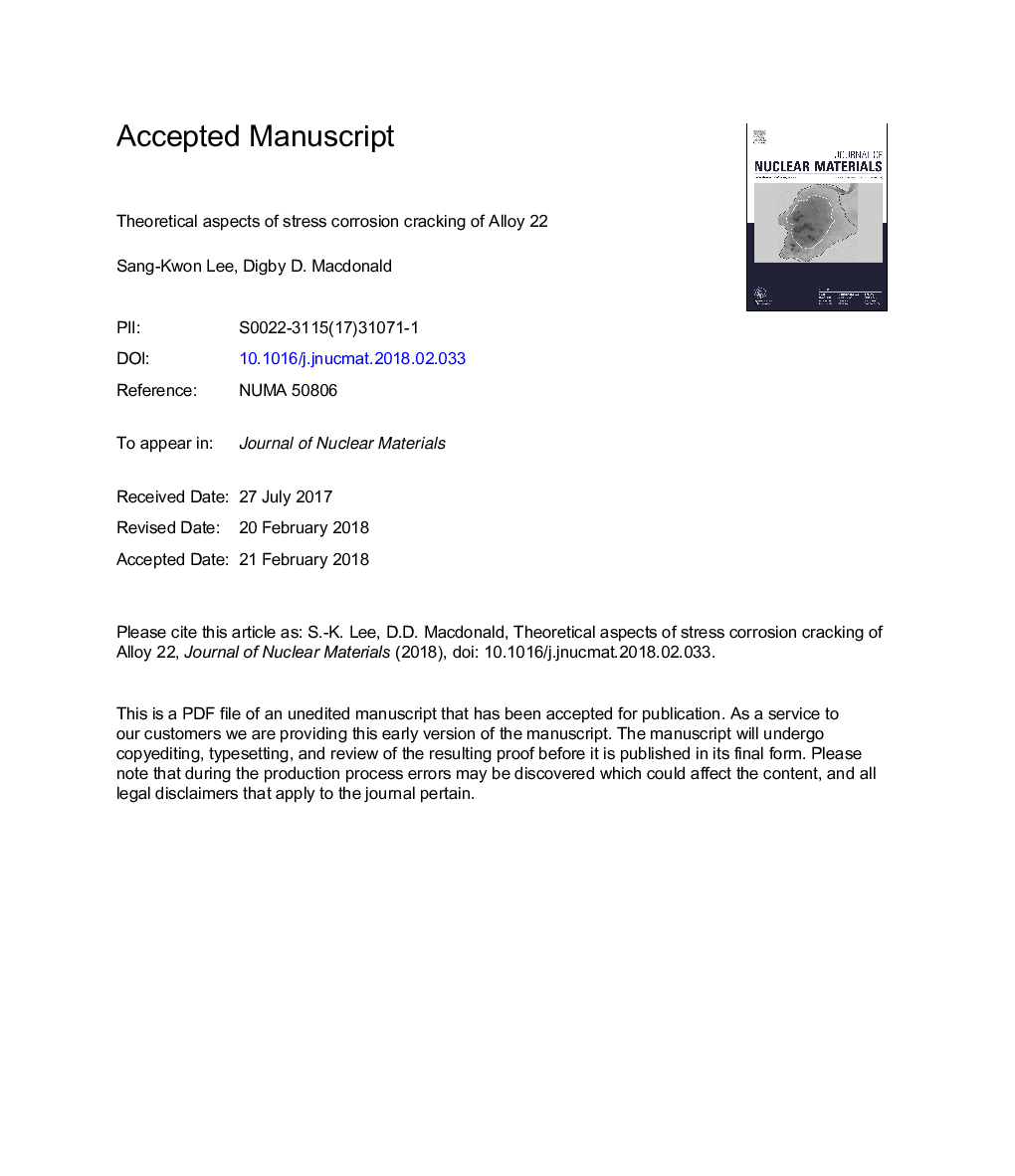| Article ID | Journal | Published Year | Pages | File Type |
|---|---|---|---|---|
| 7963259 | Journal of Nuclear Materials | 2018 | 47 Pages |
Abstract
Theoretical aspects of the stress corrosion cracking of Alloy 22 in contact with saturated NaCl solution are explored in terms of the Coupled Environment Fracture Model (CEFM), which was calibrated upon available experimental crack growth rate data. Crack growth rate (CGR) was then predicted as a function of stress intensity, electrochemical potential, solution conductivity, temperature, and electrochemical crack length (ECL). From the dependence of the CGR on the ECL and the evolution of a semi-elliptical surface crack in a planar surface under constant loading conditions it is predicted that penetration through the 2.5-cm thick Alloy 22 corrosion resistant layer of the waste package (WP) could occur 32,000 years after nucleation. Accordingly, the crack must nucleate within the first 968,000 years of storage. However, we predict that the Alloy 22 corrosion resistant layer will not be penetrated by SCC within the 10,000-year Intermediate Performance Period, even if a crack nucleates immediately upon placement of the WP in the repository.
Related Topics
Physical Sciences and Engineering
Energy
Nuclear Energy and Engineering
Authors
Sang-Kwon Lee, Digby D. Macdonald,
